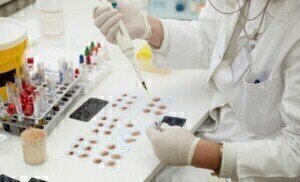Pipettes
A Brief Guide of Pipette Types
Jul 03 2014
This guide aims to illustrate the various uses of some of the most common types of pipettes found in laboratories today. In a laboratory context, pipettes are used to transfer fluids from one container to another swiftly and accurately.
While there are many different types of pipette are available, it’s important to remember that certain pipettes offer more accuracy than others. The volumetric pipette remains the world’s most accurate. The article Good Pipetting Technique – Simple Ways to Minimise Errors discusses in more detail the ways in which you can achieve consistent pipetting results.
Volumetric Pipettes
In general, volumetric pipettes are used by those investigating chemical properties and analysing reactions. They can be found in most schools, universities and professional laboratories. Famed for their accuracy, they can measure up to four significant figures. They are available in a range of sizes, enabling researchers to measure the volume of a concentrated stock solution.
Graduated pipettes
Graduated pipettes are less accurate than volumetric pipettes. Mohr graduated pipettes, which are sometimes called “drain out pipettes”, are marked with a zero at the start of their conical end, while Serological graduated pipettes, also known as “blow out pipettes”, do not display zero marks.
Vacuum-Assisted Pipettes
Vacuum-assisted pipettes may be graduated or volumetric. Graduated vacuum-assisted pipettes employ a number of graduation marks, while volumetric vacuum-assisted pipettes measure a single volume, so exhibit just one graduation mark. Vacuum-assisted pipettes are made from polystyrene, glass or borosilicate. They require a suction device but do not contain pistons.
Micropipettes
Micropipettes enable scientists and technicians to obtain very accurate measurements. Micropipettes should be calibrated regularly – at least once every 3-6 months.
Pasteur Pipettes
Pasteur pipettes are made from glass. With its bulb-shaped top, a Pasteur pipette resembles an archetypal liquid dropper. Pasteur pipettes are considered fairly inaccurate today. They are neither calibrated nor graduated, and are more often used in biology – rather than chemistry – laboratories as a way of transferring aqueous solutions from one container to another. Named after French physician Louis Pasteur, Pasteur pipettes are often disposed of after use.
To learn more about ways in which to measure a pipette’s liquid delivery performance, read this article: A Traceable Method for Verifying the Performance of 96-/384-well Pipettes. Alternatively, you can see a list of pipette suppliers in the Labmate Online Supplier’s Guide.
Digital Edition
ILM 49.5 July
July 2024
Chromatography Articles - Understanding PFAS: Analysis and Implications Mass Spectrometry & Spectroscopy Articles - MS detection of Alzheimer’s blood-based biomarkers LIMS - Essent...
View all digital editions
Events
Jul 28 2024 San Diego, CA USA
Jul 30 2024 Jakarta, Indonesia
Jul 31 2024 Chengdu, China
ACS National Meeting - Fall 2024
Aug 18 2024 Denver, CO, USA
Aug 25 2024 Copenhagen, Denmark





24_06.jpg)













